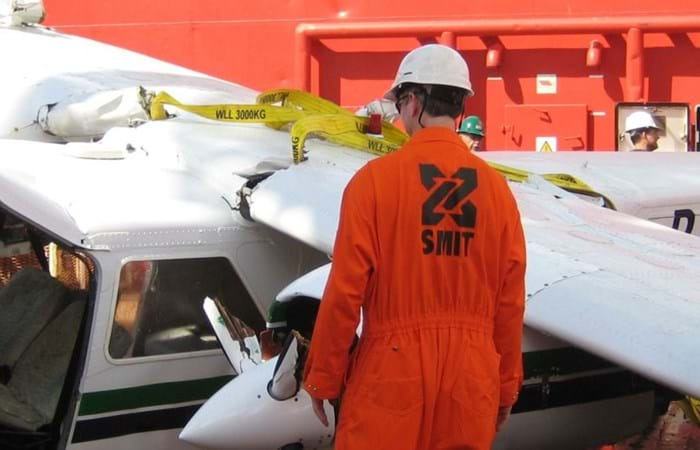On 22 October a small commercial aircraft with nine passengers made an emergency landing at sea between Curacao and Bonaire, following a failure in one of the engines. All nine passengers were able to make a safe escape, but the pilot could not be saved in time, and went down with the aircraft.
Search operation
On 26 November SMIT Salvage was contracted by the Dutch Safety Board to search for the aircraft and to prepare for a recovery operation. SMIT immediately mobilised a salvage team from Houston and Rotterdam and started a search operation with the assistance of the 'Smit Indusbank' and an ROV (Remotely Operated Vehicle).
Localisation of the aircraft
On 3 December, the plane was localized at a depth of 198 m. The operation continued with the placing of hoisting slings around the wings of the aircraft with the aid of the ROV. The ROV succeeded in placing all hoisting wings around the plane, but experienced difficulties due to the unpredictable currents from various directions. The lifting operation therefore had to be delayed, and heavier material needed to be mobilised. SMIT mobilised the 85 m DP vessel ‘Skandi Carla' from Trinidad. This purpose built ROV survey vessel is equipped with two large work class ROVs, that can operate despite strong currents.
Recovery of the aircraft
On 18 December, the ROV attached the already attached hoisting slings to the crane line of the 'Skandi Carla', and the aircraft was lifted on deck of the vessel. After the authorities removed the body of the pilot, the plane was transported to Curacao for technical investigation to the cause of the incident.

